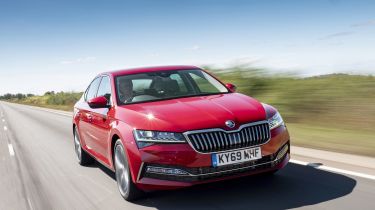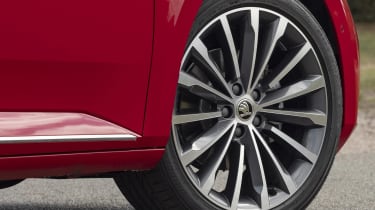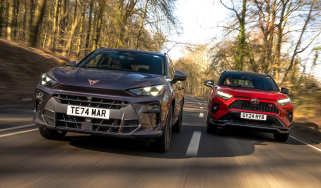Skoda Superb (2015-2024) - MPG, CO2 and running costs
Low purchase prices, cheap running costs and class-beating depreciation make the Superb a winning formula

Just to let you know, this is an older review of the 2015-2024 Skoda Superb. If you are interested in information about the running costs of the latest Skoda Superb, or news of upcoming Skoda models, please follow the links provided.
Despite it being a large, luxurious car, the Superb shouldn’t cost much more than a Skoda Octavia to run. The iV plug-in hybrid model brings new levels of efficiency, with Skoda claiming up to 248mpg - provided you ensure the battery is regularly topped up and make best use of the 20 miles of all-electric drive. Company car drivers, in particular, will be attracted by the CO2 emissions of 26-30g/km.
Although increasingly unfashionable, the diesel models are the next best option for those covering big distances. The 2.0-litre diesel in 148bhp form produces CO2 levels from 125g/km, while a claimed maximum economy figure of 59.3mpg remains impressive.
Petrol buyers know to expect reduced economy and increased CO2 emissions, but the Superb still manages to stay competitive. The 1.5 TSI, added to the range in 2019, is an efficient unit that can return up to 47mpg on average in SE hatch models; CO2 emissions for this model sit at 136g/km.
Used - available now

2019 Skoda
Superb
16,132 milesAutomaticPetrol1.5L
Cash £17,506
2018 Skoda
Superb
38,623 milesAutomaticPetrol1.4L
Cash £13,887
2023 Skoda
Superb
84,000 milesManualDiesel2.0L
Cash £13,720
2021 Skoda
Superb
55,672 milesAutomaticDiesel2.0L
Cash £17,600If you decide to go for the range-topping 276bhp four-wheel-drive model in high-spec Laurin and Klement trim, you'll see CO2 emissions of 185g/km and average economy of 34.6mpg on the combined cycle. Choosing an estate bodystyle will affect these figures slightly, with CO2 climbing to 188g/km and a reduction of 0.5mpg.
Insurance groups
The 120bhp diesel version sits in group 15 and will be the cheapest model to insure, while moving up to the 148bhp oil-burner means an increase to group 21. The 197bhp diesel in SE L trim occupies group 27.
The entry-level 148bhp petrol car with a manual gearbox is in group 17, while a choice of the mid-range SE L trim paired with the same engine and a DSG auto transmission sees only a small rise to group 19.
Choosing the top-of-the-range 276bhp 2.0-litre TSI Laurin & Klement version with four-wheel-drive and the DSG auto transmission will result in an insurance rating of group 32 and heftier premiums to pay.
Depreciation
Residual values are strong across the Superb range with an average of 47 per cent of the vehicle's original list price retained after three-years and 36,000-miles of ownership. The 276bhp 2.0-litre TSI petrol car in Sportline Plus specification is the worst-performing model in the range, keeping around 41 per cent of its value after three years.








